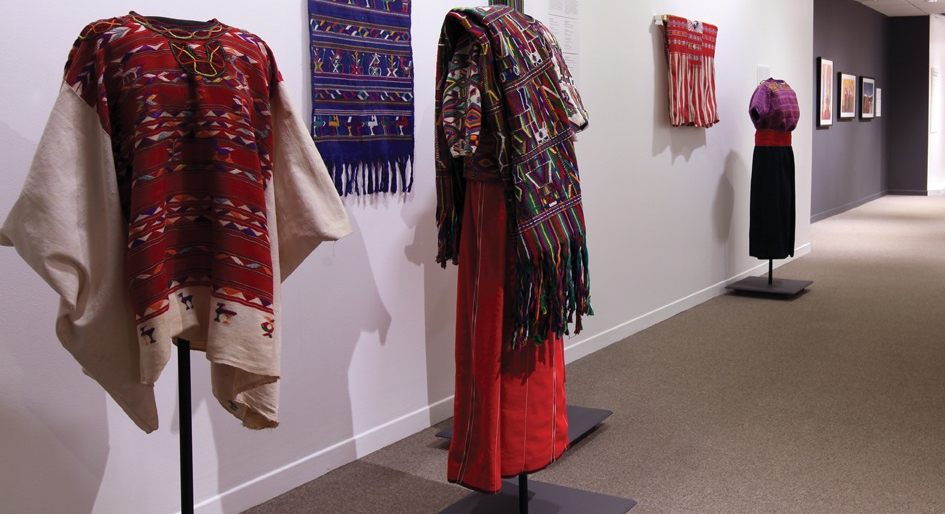While museum relics are meant to be cherished and preserved long-term, the building systems that protect them are not.
At the Textile Museum of Canada, which holds a collection of 13,000 fabrics, garments, carpets and beadwork that are up to 2,000 years old, aging and inadequate infrastructure had put the delicate artifacts at risk of damage or theft. With its mechanical systems due for an upgrade, the museum engaged its operations and solutions consultant to evaluate the building equipment and develop a plan to improve efficiency, increase security and ensure its collection would be protected for many more years.
Improper mechanical systems can pose a range of problems for facility managers. It may become difficult to control the temperature in different parts of a building, making visitors and employees uncomfortable. Delicate materials may be damaged by light or humidity. Poor security measures could result in thefts or safety issues.
The Textile Museum faced all of these threats. With its operations and solutions consultant, the museum developed a three-phase retrofit plan, which focused first on updating building heating, ventilation and air conditioning (HVAC) systems, and then on improving security and lighting.
Three steps to a successful upgrade
During the first phase, all major HVAC equipment was replaced with new high-efficiency options to help improve comfort and overall performance. Disparate systems also made way for a new building automation system. The system integrates and automates core building functions like HVAC operations, and provides real-time centralized monitoring and control for operators. It also allows operators to set temperature and humidity control for specific sections of the museum, then alerts personnel if levels exceed their limits. Changes can be made remotely, even after business hours – a particularly useful feature for nighttime or holiday events.
With the new system, the museum schedules its equipment operations to maximize efficiency. For example, it can adjust heating and cooling levels based on the time of day to reduce energy use. Detailed graphs chart individual equipment performance and trends for auditors. This allows the museum to address potential issues, such as high humidity levels, before they become problematic for an exhibit.
During the second phase, the security system was overhauled. The team installed closed-circuit television and more than 20 dome cameras throughout the museum. In addition to added security, these motion-sensing cameras also contribute to the facility’s conservation efforts by reducing energy use if no movement occurs. Video is captured and stored in a scalable, IP-based system that allows personnel to easily access video files. The system is integrated into the building automation system for easy monitoring.
Beyond surveillance, the museum also wanted to implement card access and asset locator systems. Artifacts were equipped with security tags that will trigger an alarm if they are moved outside set parameters. Standard card readers throughout the facility help control access and allow the museum to schedule door lock and unlock times. All new equipment ties into the museum’s integrated automation system for easy monitoring.
The final phase of the retrofit focused on lighting. The facility’s 20-year-old light fixtures, tracks and dimmer switches were inefficient and unevenly illuminated museum exhibits. The building also needed to comply with Canadian Conservation Institute (CCI) requirements for preserving Canadian heritage collections.
Top of the list of priorities was a move from traditional incandescent lighting to energy-efficient LED bulbs. The team also needed to ensure new lighting complied with CCI requirements for colour, brightness and temperature. A new integrated dimming system allows lighting to be adjusted throughout the museum using the automation system. The lighting improvements helped the museum qualify for $26,000 in energy efficiency incentives through the former Ontario Power Authority’s Save on Energy program.
Back to the future
Right away, the museum began to realize the benefits of lower energy use and less time spent managing and maintaining antiquated building systems. The much-needed retrofit not only fixed existing problems but it also positioned the museum for the future. As technologies develop, it will be able to adapt to take advantage of new methods of safety, security and energy efficiency.
Beyond protecting its own treasures, the changes also provided increased confidence that the museum could safeguard artifacts from the many travelling exhibits it hosts each year. It now has greater ability to expand its exhibits and program offerings.
With these updates, the museum can continue to preserve its historic textiles while keeping an eye toward the future as it realizes the long-term benefits of the project.
Lane Brennan is vice-president and general manager of Honeywell Building Solutions, Canada. Honeywell was the operations and solutions consultant for the Textile Museum of Canada’s retrofit project.




